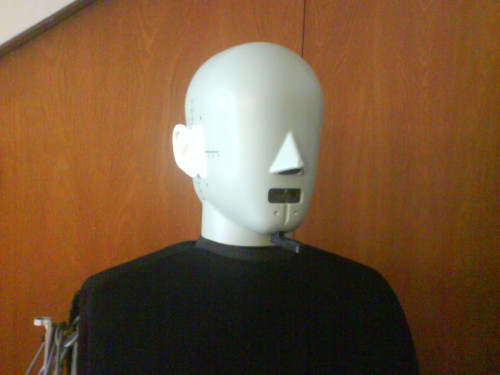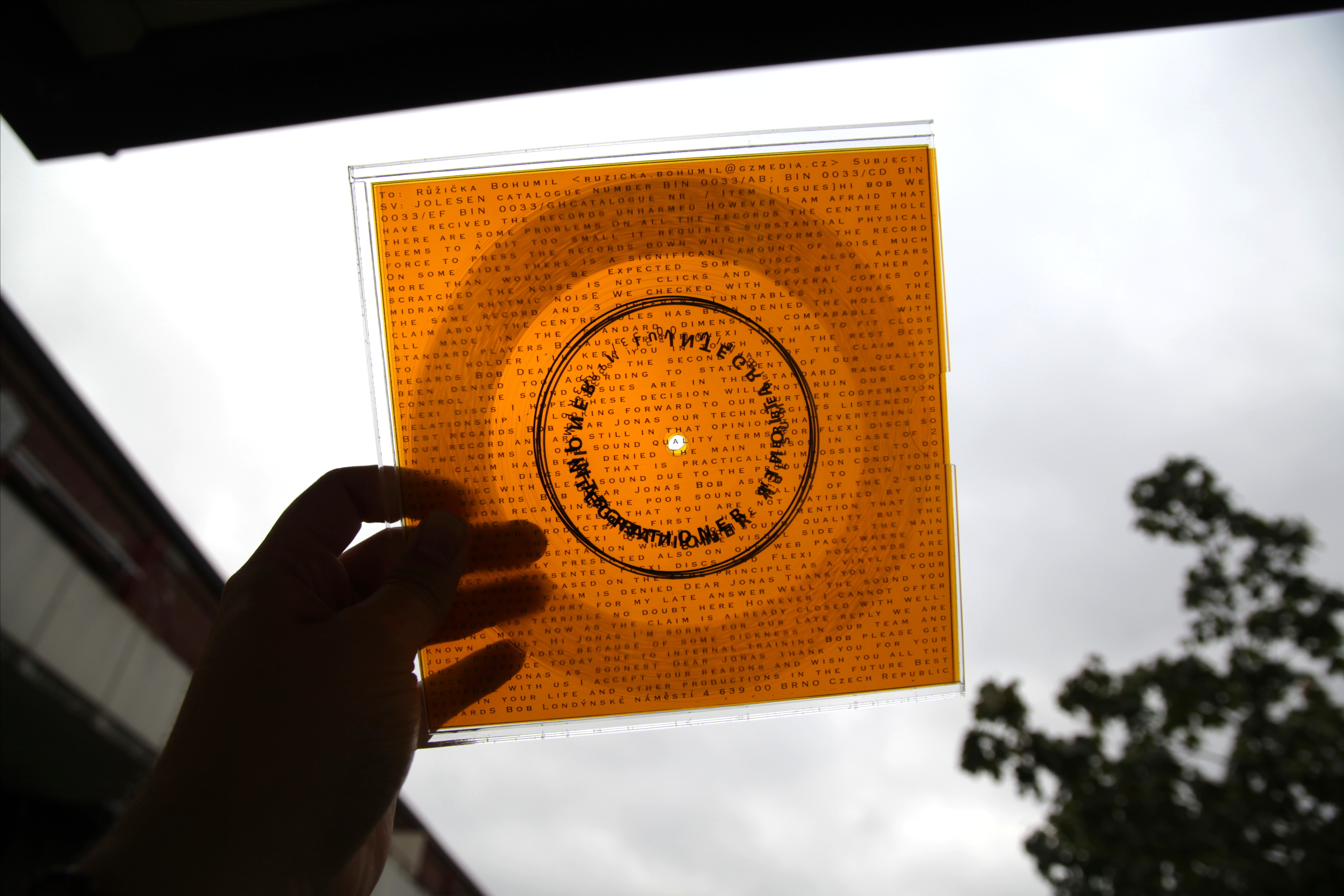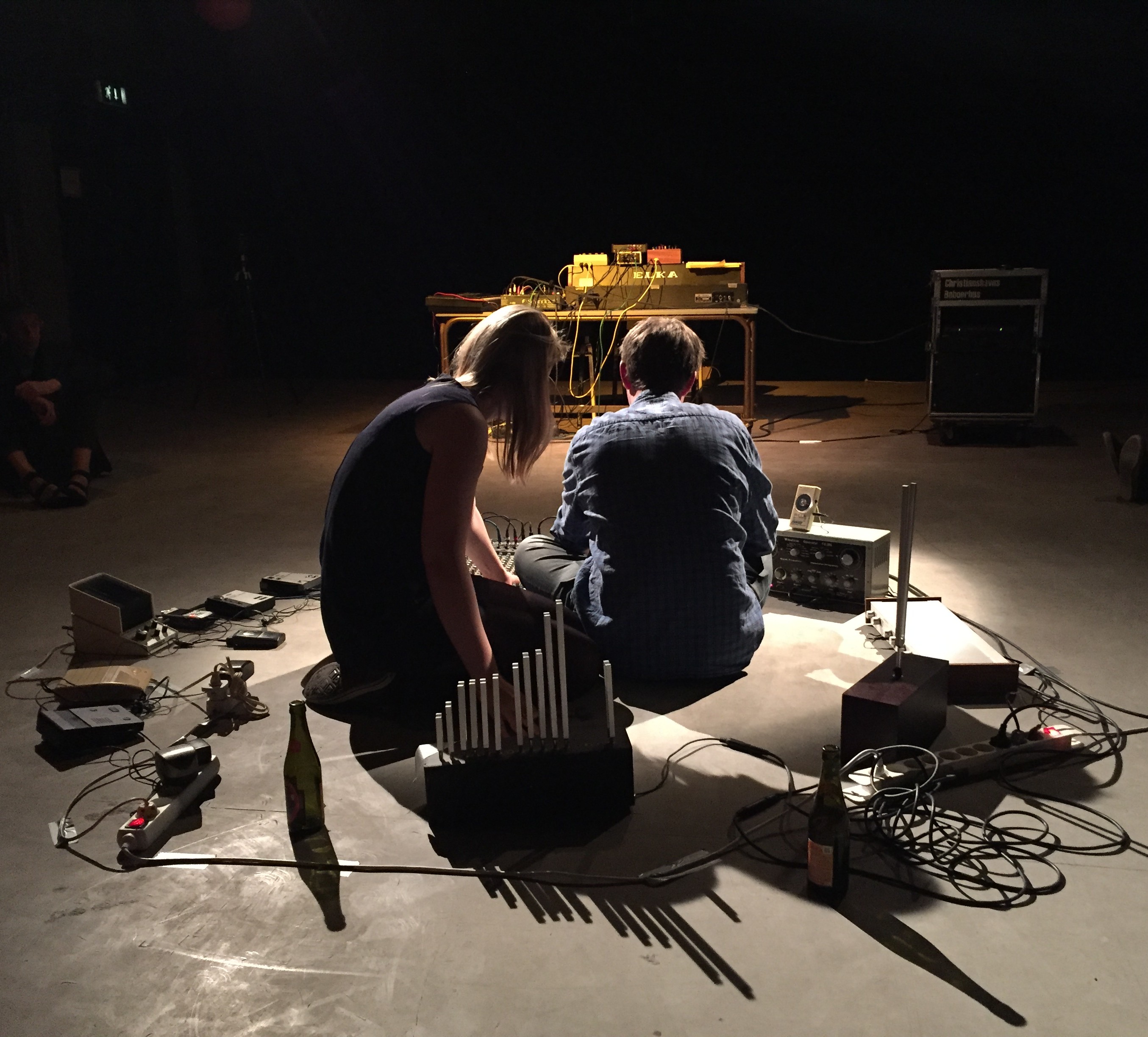Hector Rottweiler (Jonas Olesen) – Unpredictable folds and aleatoric instability

Hector Rottweiler “Infrastruktur” (BIN, 2017) – reviewed by Javier Orozco.
Jonas Olesen is the musical mind behind a series of projects (BIN, Batch Totem, IR, OOC) that gradually positioned him as a discreet underground noise pioneer in Denmark, known especially for his work with modified instruments and an archaeological approach to sound art. For the Infrastruktur EP he resuscitated his Hector Rottweiler alias; a nod to the influential thinker Theodor W. Adorno, who published a number of his writings on jazz under the pen name Hektor Rottweiler.
In this four song 12”-vinyl, which released in July as a limited edition of 150 copies, Olesen has taken distance from the conceptual dogmas that guided his previous and arguably more noisier works as Hector Rottweiler (e.g. his BLOK I & II cd-r), where he intended to create “extremely primitive robot-like music”. However, what Infrastruktur retains from the Rottweiler works is a commitment to sonic exploration through the exclusive use of hardware. None of the sounds presented were created or treated with software, the only computer involved was solely used for recording.
An album like this one could be eclipsed by the mechanics of its creation, yet this is not the case with Infrastruktur. Its four compositions were crafted with a setup that patches synthesizers, tone generators, drum machines, effects, plus a fair amount of unconventional machinery, such as white noise sleep machines, pulse emitting massage tools, reel to reel recorders and homemade spring reverbs. All the equipment is connected to two analog mixing boards in such a way that they allow the sounds to feed into each other, just before the point where actual feedback is created. This technical setting has been essential for the creation of these pieces, since a small change in one of the components of the setup can deliver drastic consequences, this instability shapes the ethos of the 12”.
Uncertain, aleatoric behaviours loom over and shape the actual sounds, sequences and drum programming, thus altering the patterns created by Olesen. However this is not chaos music, as Olesen eschews the use of modular synthesizers or algorithms designed via software which are often employed for the instigation of chaos in music making. Infrastruktur explores a terrain where chance and fragility meet, a space where a minimal alteration of the system could have a huge impact elsewhere. Olesen constructed a setup that can be manipulated, yet it also has a degree of autonomy in order to render unpredictable results; this is palpable throughout the four tracks. Only in this sense these pieces are self-generated, the ideas of the musician are shaken and scrambled through a network of patched connections that impress their own volition.
Fortunately the pieces are no less interesting than the technical setup. The music has a fleeting and fluid character rooted in unstable techno semantics: the imaginary club that plays this record is a trapezoidal room where the vantage point retreats persistently, and the audience swaps coordinates without moving. The tracks are carved by a maze of percussions, sometimes tribal and others industrial, a concert of clinking glasses and rolling marbles, tin foil implosions, a thousand metallic grass leaves shaken under a factory howl.
The compositions brim with detail and interesting quirks that request attentive listening. Infrastruktur is a vivid and interesting addition to the already complex body of work crafted by this soundsmith.
Info: Hector Rottweiler Infrastruktur 12” is out now on Olesen’s own label BIN.
Appendix. To attempt a description of the pieces would only render stiff paragraphs, as an alternative I offer the stream of thoughts that surged while listening to each individual track.
A.1. Infrastruktur. Echoes of canned water banged in patterns. A deeper specter reveals itself, remote polisonic repertoires. A trickling party of metallic grass, the sudden appearance of a pulsating frontal ram. The beat pulses, its elements gradually morph with brutal aleatoric precision. Whistles, unintentional whistles of forlorn chimneys, forsaken hi hats. Spare snares, a desolate brief pause, all elements rush in. Accelerated. Central bass drum covered in cellophane, throbbing within a forest of tubes animated by unnamed forces. An ellipsis that could spiral away any second. A damaged snare behaves in a two-step fashion. The entirety of this system on the verge of being something else, a mirror system at the other side of the fold.
A.2 sub-december. Tribal. Muffled, an inwards collision of sound, a strenuous effort to come out of the speakers. A pulsating and steady foundation. Sounds that splash out, appear and may not do so again. Pulses. Pulses. Pulses. Creaking insects. More like insect legs. Anxious, disciplined, expert, tapping. Distant crushes. Corrugated tinfoil. The sonic elements burst in and out of a fiber of cellophane. Tactility. The beat deflates. Rotating knobs. A heap of dirt collapses, pebbles trickle.
B.1 forvitr. Marbles roll and uninterruptedly pummel a dark glossy surface. Faster. Faster. A drumming of marbles, half of them covered in nails. Pulses. Three, four of them, they gather speed, as preparing for a long journey. The deeper scale of tone arrives. Steady deadpan bass drum. Crystal snares. Everything is trapped within an hourglass, mustering for an escape plan. A bang on the edges of the hourglass. Kickdrums. Merciless, fleeting kickdrums. The dented marbles bite. A soft backdrop, a distant monotone key floats. Drumkick. Pulses. The key floats again, it looms over the hourglass. The marbles are covered in grainy salt. They shake. They shriver. Thousand metallic legs tap on glass. Clinks. Clinks. Clinks. They rush. A carbon pencil draws endless circles.
B.2 Haeldning. Percussions, geographically distant. Short circuits, distorting unto themselves, a crunch invades them, metastasis of hushed noises. One flees and travels underwater. A distant clash. A ball on an empty metal room floating in reverse. A clear sound, disguising itself behind the thicker sounds. The system of percussive rhythms might collapse. The higher infrared sounds rises again. A firmness holds this fragility from cracking apart. Two smashes. Two balls on an empty metallic room. They phase out from each other, like the broken harmony of a military march.


